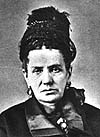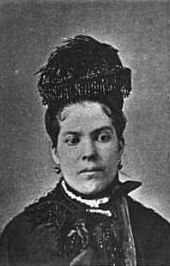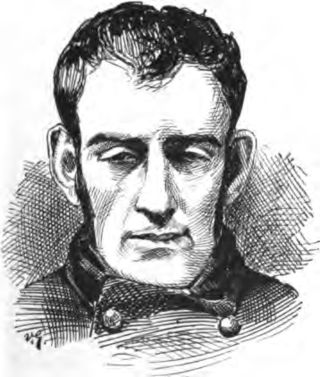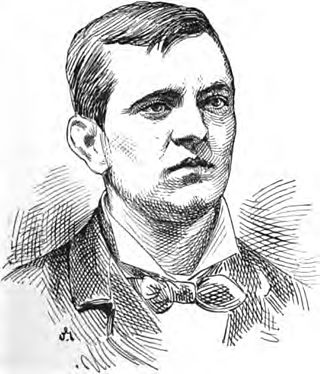
The Lenox Avenue Gang was an early 20th-century New York City street gang led by Harry Horowitz; it was considered one of the most violent gangs of the pre-Prohibition era. It was based in Harlem in Upper Manhattan, New York City, around 125th Street, in what was then a predominantly Jewish neighborhood.

Edward Coleman was the founder of the Forty Thieves, alleged to be the oldest criminal gang in New York City and the first Irish gang with an established leader. He became one of New York City's most notorious villains for the murder of his wife Ann. She was a popular Five Points character and known as "The Pretty Hot Corn Girl".

Fredericka "Marm" Mandelbaum operated as a criminal fence to many of the street gangs and criminals of New York's underworld, handling between $1–5 million in stolen goods between 1862 and 1884. Like her principal rival John D. Grady and the Grady Gang, she also became a matriarch to the criminal elements of the city and was involved in financing and organizing numerous burglaries and other criminal operations throughout the post-American Civil War era. With George Leonidas Leslie, she was involved in the 1869 Ocean National Bank robbery and the 1878 Manhattan Savings Institution robbery.
"Dandy" Johnny Dolan was a New York City murderer and reputed leader of the Whyos street gang.

"Black" Lena Kleinschmidt was a German-born New York criminal who, as a prominent jewel thief during the late 19th century, was an associate of fence Fredericka "Marm" Mandelbaum and Adam Worth. Among others in Mandelbaum's "clique", she and con artist Sophie Lyons served as protégés early in their careers of shoplifting and pick pocketing.

Christene Mayer or Kid Glove Rosey was a New York criminal and thief during the late 19th century; her aliases including Mary Scanlon and Rosey Roder.

Ellen Clegg was an American criminal, active in New York, who specialized in pick pocketing and shoplifting. A close associate of Fredericka Mandelbaum, she was well known to authorities in several major cities along with her husband James "Old Jimmy" Clegg and had an extensive arrest record. She was arrested with Tilly Miller, "Black" Lena Kleinschmidt and four other shoplifters in Boston on December 6, 1876; her picture taken by the Boston Police Department for the "Rogues' Gallery". She was later arrested in the city for pick pocketing two years later and sent to the House of Correction.
Eliza Wallace, also known as Big Mary or Boston Mary, was an American criminal in New York during the late 19th century. Her known aliases included Eliza Gilford, Mary Anderson, and Mary Rogers. An associate of Fredericka Mandelbaum, she was a prominent thief and con artist in New York's underworld during the 1860s and 1870s.
Gilbert Yost was a New York criminal and burglar associated with George Leslie and later the Dutch Mob. He was arrested with Leslie after robbing a jewelry store in Norristown, Pennsylvania in 1870 and, while Leslie was able to use his political connections in Philadelphia to secure his release on bail which he forfeited after fleeing the city, Yost was convicted and sentenced to two years imprisonment.

John "Red Rocks" Farrell was an American criminal, thief and member of the Whyos, a prominent New York street gang during the mid-to late 19th century. One of the more colorful members of the gang at the height of its power, he spent nearly half his life in correctional institutions.

Sophie Lyons was an American criminal and one of the country's most notorious female thieves, pickpockets, shoplifters, and confidence women during the mid-to-late 19th century. She and her husbands Ned Lyons, Jim Brady and Billy Burke were among the most sought-after career criminals in the U.S. and Canada, being wanted in several major cities including New York City, Philadelphia, Boston, Detroit and Montreal from the 1860s until the turn of the 20th century.
The Bowe Brothers were a criminal family in New York City during the early-to-mid-19th century. The gang was headed by Martin Bowe, owner of the Catherine Slip sailors' home Glass House, and included Jack, Jim and Bill Bowe. All were well-known shooters, cutters and thieves in New York's Fourth Ward and often led waterfront thugs in raids on dockyards and ships anchored in the East River. The brothers were also fences and disposed of money obtained by other waterfront gangs.
Hester Jane Haskins or Jane the Grabber was an American madam, procuress, and underworld figure in New York City during the 1860s and 1870s. The main rival of Red Light Lizzie, she owned and operated several "houses of ill fame" as well being a chief supplier of prostitutes to bordellos, brothels, and similar establishments throughout the city. She employed a small group of "respectable-looking men and women", numbering a dozen or so, who traveled New England luring young women with promises of exciting jobs back in New York. Once these women arrived, they were abducted and forced to work in her or her clients' establishments.
Tom O'Brien was an American confidence man and swindler during the late 19th century. He was popularly known as "King of the Bunco Men", along with other prominent tricksters such as Joseph "Hungry Joe" Lewis and Charles P. Miller, and organized countless bunco and confidence schemes throughout the United States, especially in New Orleans, Chicago and New York, as well as in Europe. He often partnered with a number of confidence and banco men such as Lon Ludlam, Red Adams, Frank Smith, Pete Carlisle, Ed Ray, Red Austin, Charley Hinnell, "Hungry Joe" Lewis and Reed Waddell. He later shot and killed Waddell in an argument over money following a scheme they had run in Paris, France.

Michael "Sheeny Mike" Kurtz was an American burglar and gang leader in New York City during the mid-to late 19th century. He was one of the co-founders of the Dutch Mob, along with Little Freddie and Johnny Irving, during the 1870s. Kurtz and the others controlled the area between Houston and 5th Streets for several years until the gang was driven out by "strong-arm squads" under Captain Anthony Allaire in 1876. A year later he was arrested in Boston for robbing a silk house owned by Scott & Co. and sentenced to 12 years imprisonment. It was while in prison that he discovered that eating common soap could produce the effect of ill health. His sudden and unexplainable weight loss and other symptoms baffled the prison doctors and he was able to fool officials that he was dying and received a pardon.
Tom Flaherty, more commonly known under his pseudonym Old Flaherty, was an American criminal, sneak thief and river pirate in New York City during the mid-to late 19th century. He was the patriarch of a criminal family in New York's Seventh Ward which terrorized the New York waterfront in the post-American Civil War era. Flaherty was described as having "long white whiskers and a benevolent smile, but he was one of the most cruel thugs of the Seventh Ward".

Patrick Conway, commonly known by his alias Patsy or Patsy Conroy, was an American burglar and river pirate. He was the founder and leader of the Patsy Conroy Gang, a gang of river pirates active on the New York waterfront in the old Fourth Ward and Corlears' Hook districts during the post-American Civil War era.

"Little" Annie Reilly, also known under the aliases Kate Cooley, Connelly and Manning, was a 19th-century American thief and con artist widely regarded as "the cleverest woman in her line in America". A well-known member of New York's underworld, she was part of an elite "inner circle" of female career criminals under Marm Mandelbaum during the 1860s and 1870s. These included some of the most notorious thieves, blackmailers and confidence women in the country such as Lena Kleinschmidt, Sophie Lyons, Kid Glove Rosey, Queen Liz, Big Mary and Old Mother Hubbard

John Hope (1856–1906) was a 19th-century American burglar, bank robber and pickpocket. The son of James "Old Jimmy" Hope, he was alleged to have been associated with his father and the George Leslie Gang. He was among those arrested for the 1878 robbery of the Manhattan Savings Institution although he and Billy Kelly were the only men actually sent to prison for this crime.
Michael Mahoney, better known as Wreck Donovan or simply The Wreck, was a nineteenth-century American sneak thief, river pirate and underworld figure in New York City. He was a well-known criminal for hire on the New York waterfront during the post-American Civil War era and later became a member of Patsy Conroy Gang.












